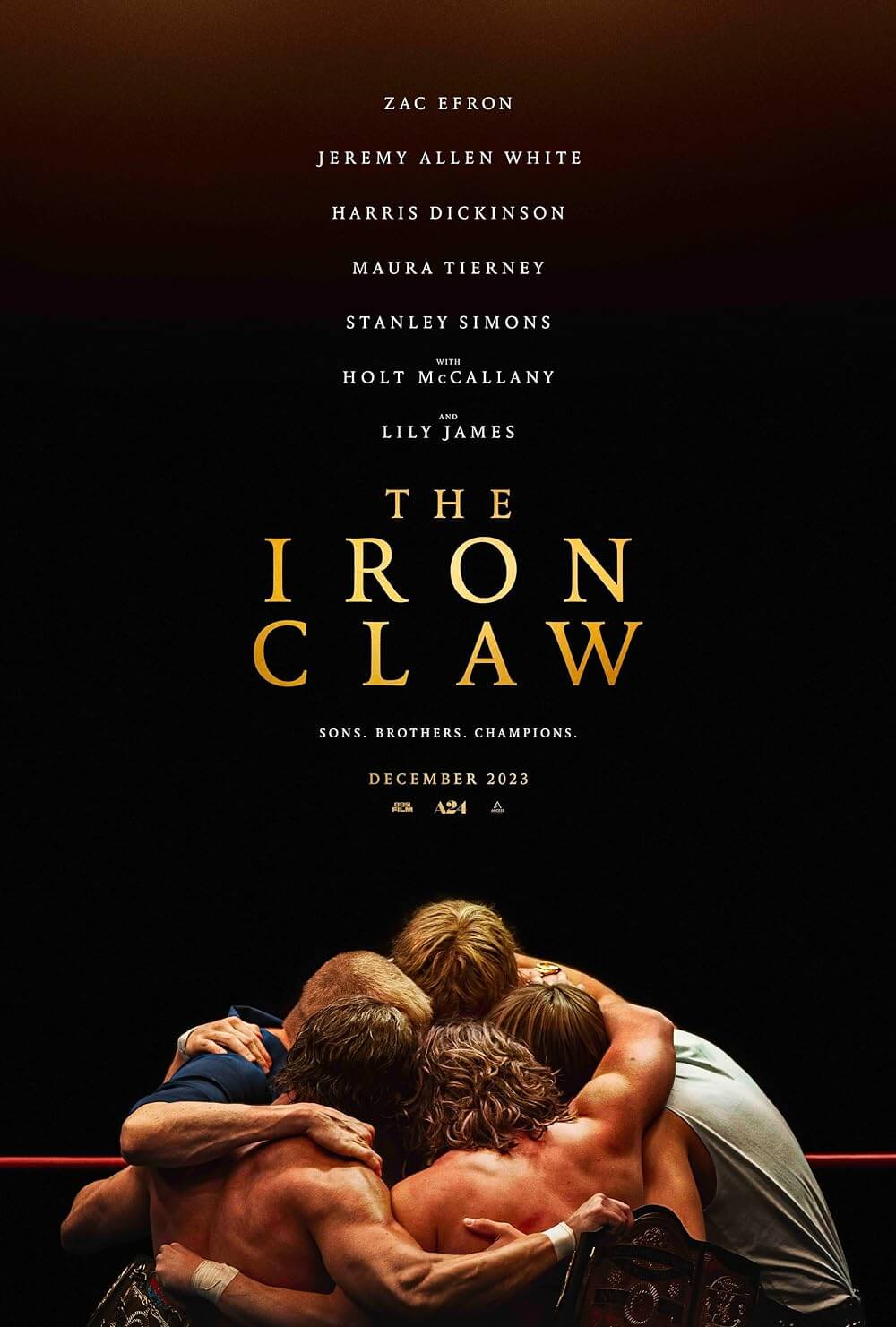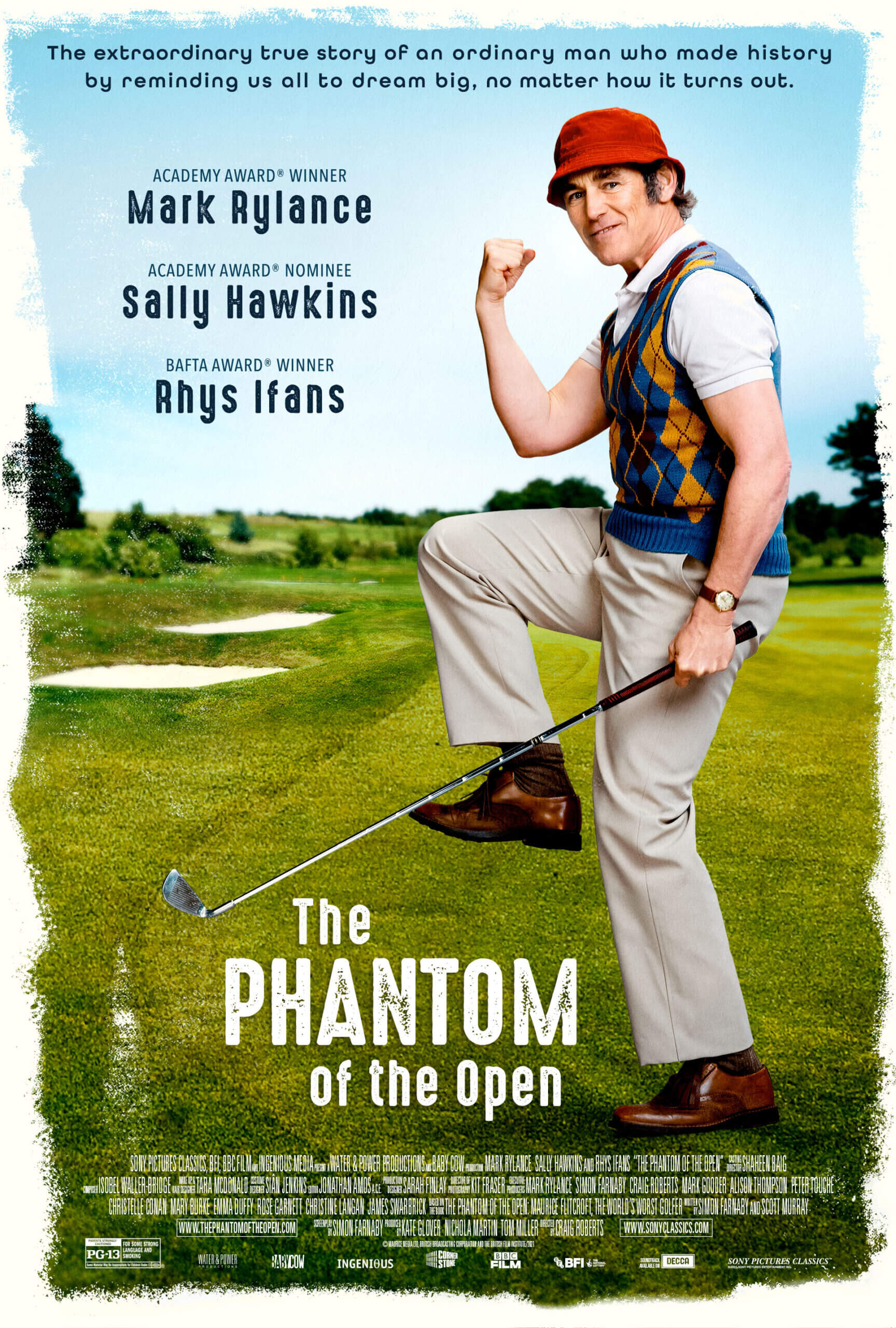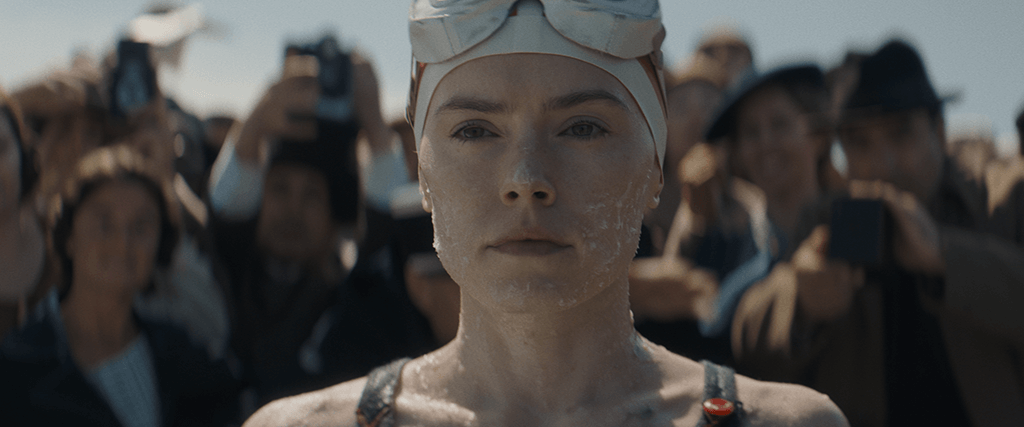
Young Woman and the Sea
By Brian Eggert |
Young Woman and the Sea tells the uplifting true story of Trudy Ederle, who, in August 1926, became the first woman in history to swim across the English Channel. The Walt Disney Pictures release is a glossy production, classically mounted by director Joachim Rønning, who is no stranger to water-heavy stories. After his widely praised 2012 adventure about the Kon-Tiki expedition, which he directed alongside Espen Sandberg, Rønning has been working exclusively with the House of Mouse, helming Pirates of the Caribbean: Dead Men Tell No Tales (2017) with Sandberg, and then going solo for the 2019 Maleficent sequel. Next year, he’s releasing a third TRON movie. And while audiences grow ever more tired of the endless corporate franchise movies, Rønning’s latest is a refreshing true story about a real-life inspiration more galvanizing than any intellectual property icon. The film is a stirring account of its hero’s defiance against the limitations a patriarchal society had set for her. Following a standard sports drama template, it boasts few surprises but is no less compelling or cheer-worthy for its familiarity. This is a wonderfully sturdy crowd-pleaser that, sure, may play the audience like a harp, but it’s so well put together and so moving that one can hardly complain.
Opening in New York in 1914, the story finds young Trudy (Olive Abercrombie) barely surviving the measles. Rather than allowing her child’s sickly youth to define her, Trudy’s strong-willed German immigrant mother (Jeanette Hain) demands that her daughters learn to swim and become self-reliant women. This comes in the aftermath of a recent ferry fire that left multiple women dead because they didn’t know how to swim. Though their disapproving father (Kim Bodnia) believes women swimming is indecent, Trudy and her sister Meg (Lilly Aspell) learn at a time when women were segregated in the swimming pool. But as they get older, the adult Trudy (Daisy Ridley) goes from an unlikely competitor to outperforming her sister (Tilda Cobham-Hervey), who ultimately falls into the more traditional lifestyle of an arranged marriage and a job at the family butcher shop. After struggling to earn a spot in the Women’s Swimming Association, Trudy wins all sorts of state and national medals; she even breaks a world record. Yet, her father still sides with society at the time in thinking women shouldn’t be swimming competitively.
So when Trudy sets her sights on swimming the English Channel, it’s not only a personal ambition fuelled by her competitive streak but a statement of gender equality. If she crosses, she single-handedly legitimizes female athletics on a global stage. By 1926, when Trudy accomplished her feat, women only had the right to vote for six years; they were still being cited by police for showing too much leg at the beach. To be sure, regardless of her accomplishments, Trudy faces discrimination and humiliation on her way to and after competing in the 1924 Olympics in Paris. Neither Trudy nor any of the other members of the American Women’s Olympic Swim Team, received proper training time from their appointed coach, the failed Scottish swimmer Jabez Wolffe (Christopher Eccleston). His so-called protection of female swimmers extends to sabotage, preserving his fragile worldview that men are superior athletes. But Young Woman and the Sea needs stuffy antagonists like Wolffe, and even mild dissenters such as Trudy’s father; it makes Trudy’s inevitable victories so much more satisfying when her doubters have their misguided skepticism proven wrong.
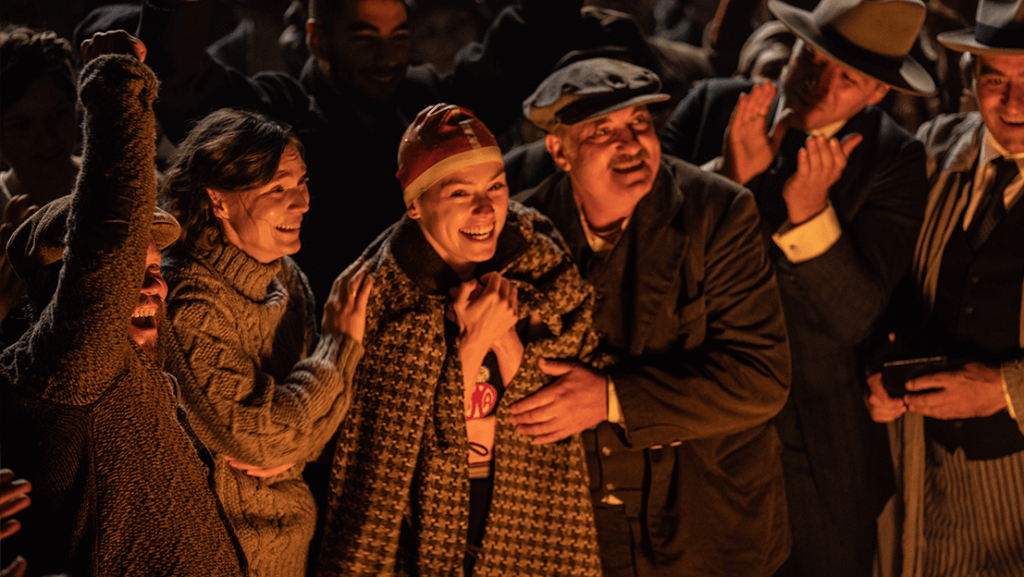 Comparisons to last year’s Nyad are inevitable. The two based-on-a-true-story films are doubles akin to 1997’s Volcano and Dante’s Peak or 1998’s Armageddon and Deep Impact. But where Diana Nyad used her copious resources and sponsorship deals pn a personal mission to prove that physical limits are not defined by age but willpower, there’s more at stake for Trudy. The conflict is greater, and her inevitable achievement is more satisfying. Trudy’s story is tantamount to someone like Amelia Earhart or Marie Curie, if lesser known, for representing a vast cultural shift. Without her, women in sports might have been set back decades. When it was over, I was struck by the importance of this story not just for Trudy but for women everywhere, whereas with Nyad, I was more impressed with Diane Nyad’s individual accomplishments. Elsewhere, the period setting and water sports aspect of the story brought to mind 2023’s The Boys in the Boat—another sporting drama set in the first half of the twentieth century that, by comparison, feels airless and low-stakes.
Comparisons to last year’s Nyad are inevitable. The two based-on-a-true-story films are doubles akin to 1997’s Volcano and Dante’s Peak or 1998’s Armageddon and Deep Impact. But where Diana Nyad used her copious resources and sponsorship deals pn a personal mission to prove that physical limits are not defined by age but willpower, there’s more at stake for Trudy. The conflict is greater, and her inevitable achievement is more satisfying. Trudy’s story is tantamount to someone like Amelia Earhart or Marie Curie, if lesser known, for representing a vast cultural shift. Without her, women in sports might have been set back decades. When it was over, I was struck by the importance of this story not just for Trudy but for women everywhere, whereas with Nyad, I was more impressed with Diane Nyad’s individual accomplishments. Elsewhere, the period setting and water sports aspect of the story brought to mind 2023’s The Boys in the Boat—another sporting drama set in the first half of the twentieth century that, by comparison, feels airless and low-stakes.
All the while, Young Woman and the Sea does what it does competently. Rønning never resorts to an overly flashy or CGI-heavy aesthetic, apart from a few shots designed to capture New York’s 1920s skyline or the treacherous conditions on the English Channel. Frequent J.A. Bayona cinematographer Óscar Faura delivers a glossy presentation, aided by the Hollywood-brand production design by Nóra Takács. The film looks handsome, and, if not fully romanticized, then polished enough to resist any hint of genuine realism. It plays like many Disney sports movies, from Miracle (2004) to Queen of Katwe (2006), in that the film shimmers even in its darkest moments. Rønning does little more cinematically than supply a solid studio production, offering no aesthetic surprises and even fewer narrative ones. No matter, since such devices are deployed for engaging material and powerful emotional payoffs. Ridley sells every moment with her character, offering perhaps her fullest performance to date. The supporting cast is also excellent, with Stephen Graham and Sian Clifford standing out as Trudy’s mentors.
Based on Glenn Stout’s 2009 book, Young Woman and the Sea: How Trudy Ederle Conquered the English Channel and Inspired the World, the screenplay was written by Jeff Nathanson, another Disney fixture behind Dead Men Tell No Tales and various live-action adaptations of classic animated features. Nathanson doesn’t break the mold here, and anyone versed in the standard sports movie template can predict the highs and lows. It’s the rare film that succeeds despite its formulaic structure by simply telling a powerful story with convincing details, commanding performances, and effective emotional beats. These elements underscore the sense of Trudy’s historical triumph, which is reinforced by the archival footage from the 1920s, showing the record-breaking reception in New York that might’ve seemed like Hollywood embellishment had the actual footage not been available. On the whole, Young Woman and the Sea doesn’t reinvent the genre, but it supplies a reminder of why cinema’s greatest sports movies are often underdog stories, and why underdogs are often groundbreakers.
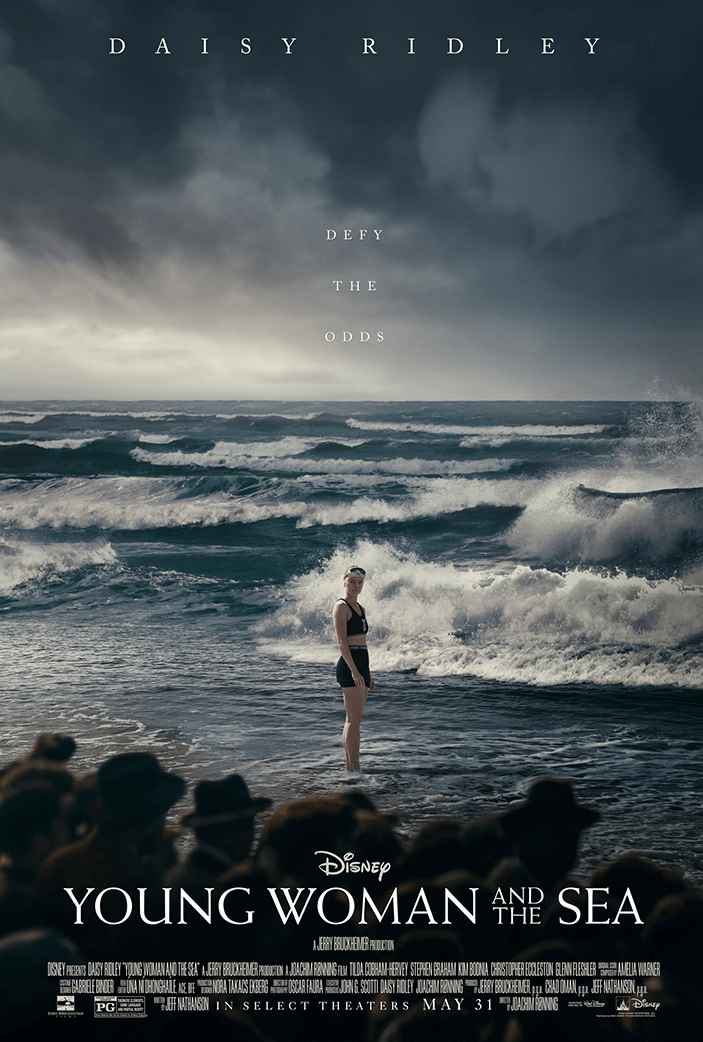
Consider Supporting Deep Focus Review
I hope you’re enjoying the independent film criticism on Deep Focus Review. Whether you’re a regular reader or just occasionally stop by, please consider supporting Deep Focus Review on Patreon or making a donation. Since 2007, my critical analysis and in-depth reviews have been free from outside influence. Becoming a Patron gives you access to exclusive reviews and essays before anyone else, and you’ll also be a member of a vibrant community of movie lovers. Plus, your contributions help me maintain the site, access research materials, and ensure Deep Focus Review keeps going strong.
If you enjoy my work, please consider joining me on Patreon or showing your support in other ways.
Thank you for your readership!
Brian Eggert | Critic, Founder
Deep Focus Review


